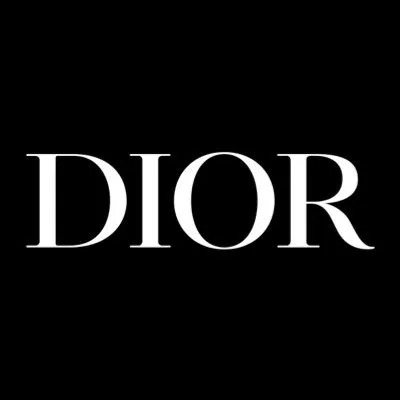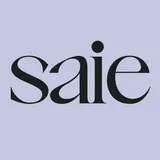
Dior
Learn more about our scoring →
About Dior
Dior represents the pinnacle of French luxury beauty, operating as LVMH's flagship cosmetics and fragrance house with an unrivaled heritage in haute couture translated into prestigious makeup, skincare, and fragrance collections. The brand's global market dominance spans high-end department stores and exclusive boutiques, positioning itself as the ultimate expression of sophisticated French beauty innovation.
Dior's sustainability journey reflects both the opportunities and constraints of luxury beauty leadership, demonstrating strong environmental commitments through science-based climate targets and innovative packaging solutions while facing significant challenges in animal welfare practices. The brand's approach to responsible beauty balances regulatory compliance with ambitious environmental goals, particularly in areas of renewable energy adoption and regenerative agriculture initiatives.
As part of LVMH's broader sustainability strategy, Dior benefits from group-wide resources and expertise while navigating the complex requirements of global luxury markets, including regions where animal testing remains mandatory for regulatory approval.
The Good Stuff
Where Dior appears to be making meaningful progress. We cross-referenced these findings with multiple independent sources.
Science-Based Climate Leadership
Demonstrates strong environmental commitment through validated science-based targets and 82% renewable energy achievement, positioning climate action as a core business priority
Revolutionary Packaging Innovation
Pioneering plant-based packaging materials and committing to 100% refillable or recyclable packaging with zero virgin plastic targets by 2028
Regenerative Beauty Agriculture
Leading regenerative agriculture practices across 42 Dior and partner gardens, supporting biodiversity while ensuring sustainable ingredient sourcing
The Reality Check
Areas where the publicly available data gets murky, incomplete, or concerning. We're transparent about the limitations of our analysis.
Animal Testing Permissions
Permits animal testing when required by regulatory authorities without third-party cruelty-free certification or alternative testing commitments
Labor Standards Transparency
Supply chain auditing lacks living wage policies and comprehensive transparency standards despite supplier tracking initiatives
Animal-Derived Ingredient Reliance
Products consistently contain animal-derived ingredients including beeswax, lanolin, and carmine without vegan alternatives or certification
Dior's
Impact Aura
A visual representation of Dior's positive impact
across People, Planet and Animals
Each colored area represents the brand's performance in that sustainability category. The size and intensity of each blob corresponds to their score—larger, more vibrant areas indicate stronger performance.
Our Research
Key findings from our comprehensive analysis of Dior's sustainability performance across People, Planet & Animals impact.
Positive Impact on People
Research Highlights
- Responsible Formulation Charter excludes parabens, cyclic silicones, formaldehyde-releasers, and oxybenzone
- EU compliance verification for fragrance ingredients with no microplastics concerns identified
- Supply chain tracking includes certified sourcing of leather, wool, and cotton with 100% targets
- Labor practices demonstrate supplier auditing without living wage policies or transparency standards
- Marketing integrity maintains transparent ingredient claims without misleading litigation records
Evidence Strength
Strong documentation for ingredient safety and supply chain tracking, significant gaps in labor standards verification
Positive Impact on Planet
Research Highlights
- Climate action aligned with science-based targets achieving 82% renewable energy use
- Packaging innovation introducing plant-based PEF materials through strategic partnerships
- Regenerative agriculture implemented across 42 Dior and partner gardens supporting biodiversity
- Ambitious packaging commitments targeting 100% refillable or recyclable by 2028
- Chemical responsibility demonstrates hazardous substance exclusion with regulatory compliance
Evidence Strength
Excellent documentation across climate, packaging, and chemical initiatives with third-party validation
Positive Impact on Animals
Research Highlights
- Permits animal testing when required by law without third-party cruelty-free certification
- Products contain animal-derived ingredients including beeswax, lanolin, and carmine
- Sustainable sourcing includes certified leather, wool, and viscose without Fair-Trade standards
- Wildlife conservation limited to regenerative flower farming programs
- No major biodiversity partnerships or comprehensive habitat restoration initiatives
Evidence Strength
Clear documentation revealing limited animal welfare commitments across all criteria
See the Receipts
We don't just make claims—here are the official certifications that prove Dior's sustainability commitments.
Frequently Asked Questions
Is Dior sustainable?
Dior demonstrates strong sustainability performance in climate action and packaging innovation, achieving science-based targets and pioneering plant-based materials. However, the brand shows significant gaps in animal welfare practices, including permitted animal testing and exclusive use of animal-derived ingredients.
Is Dior cruelty-free?
No, Dior is not cruelty-free. The brand permits animal testing when required by law in certain markets and lacks third-party cruelty-free certification. Dior does not demonstrate alternative testing commitments across product categories.
Does Dior make vegan products?
No, Dior does not offer vegan products. Their formulations consistently contain animal-derived ingredients such as beeswax, lanolin, and carmine. The brand has not introduced vegan product lines or pursued vegan certification.
What makes Dior carbon-conscious?
Dior's carbon-conscious approach includes alignment with LVMH's science-based climate targets and achievement of 82% renewable energy use across operations. The brand demonstrates measurable progress in emissions reduction through verified environmental commitments.
How does Dior approach packaging sustainability?
Dior leads packaging innovation through plant-based PEF materials and commits to 100% refillable or recyclable packaging by 2028. The brand targets zero virgin plastic use, demonstrating significant investment in sustainable packaging solutions.
Are Dior ingredients safe?
Dior maintains ingredient safety through their Responsible Formulation Charter, which excludes parabens, cyclic silicones, formaldehyde-releasers, and oxybenzone. The brand demonstrates EU regulatory compliance with verified safety assessments for fragrance ingredients.
What is Dior's supply chain transparency?
Dior implements supply chain tracking for certified sourcing of leather, wool, and cotton with 100% certification targets. However, the brand's labor practices lack living wage policies and comprehensive audit transparency despite supplier monitoring programs.
Ready to Shop Dior?
Find Dior products through our trusted retail partners
The Bottom Line
Dior excels in environmental leadership through science-based climate targets and packaging innovation, while facing significant challenges in animal welfare practices that limit overall sustainability performance. The brand represents the complex sustainability landscape of luxury beauty, where environmental ambition coexists with traditional luxury ingredients and regulatory constraints.
Compare Brands
See how Dior stacks up against similar brands


